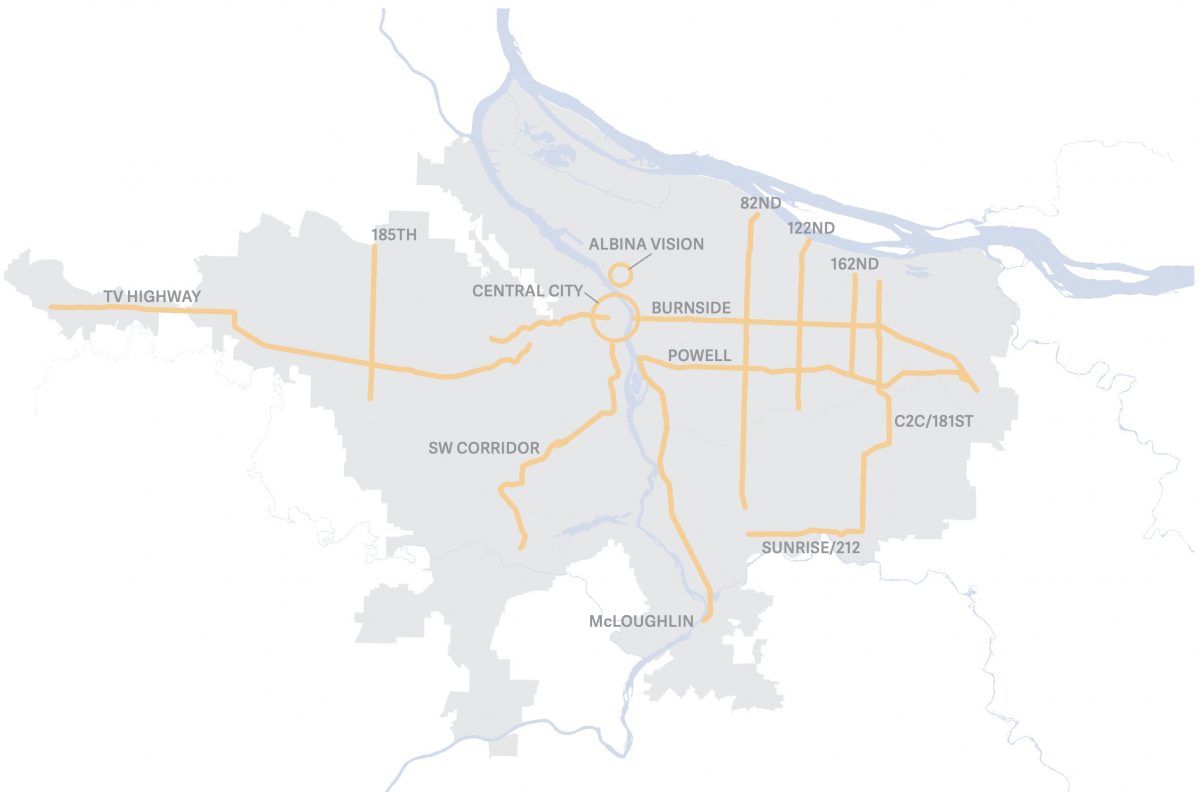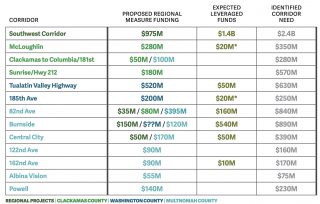
(Source: Metro)
With the holiday break now firmly in the rear view mirror, Metro is returning to work on its planned November 2020 transportation ballot measure with three meetings scheduled for the next week that will give Portlanders a chance to share their opinions about the nearly $4 billion proposal.

(Photo © J . Maus/BikePortland)
The Getting There Together and other groups are putting out action alerts to contact members of Metro Council in advance of a publich hearing on Monday January 13th, which will see staff and planners take questions from the public about potential funding sources for the measure.
The following day, (Tuesday, January 14th) Metro Council will convene at a work session to consider recommendations from the Transportation Funding Task Force. Then on Wednesday the 15th, the Task Force will meet again for the first time in nearly a month to continue discussions about transportation investment options.
Here’s what you need to know going into what could be a consequential week for transportation funding in our region…
Advertisement

(Source: Metro)
At the beginning of January, the latest recommended measure (PDF) was released by the Task Force. The proposal now calls for $3.8 billion in spending, an increase of $700 million from the last proposal made public in October. In general, the most recent draft provides significant new funding for transit and biking/walking safety improvements and codifies the votes taken at the Task Force’s last meeting on December 18th. According to Metro, 56% of the new overall package of investments are transit-related, while 38% are safety-related and 79% have an equity focus. Further, the measure would create 86 miles of safety investments in high-injury corridors.
The Task Force’s recommendations divvy up the spending between 13 “Tier 1” Corridors, which includes $975 million for the Southwest Corridor Light Rail, a figure that is unchanged from the October draft. But funding in other corridors was increased, sometimes significantly. The Tualatin Valley Highway saw the biggest jump from $350 million to $520 million, with most of the funds going towards improvements for transit users and walkers. The Powell Corridor also saw a significant increase and now has recommended funding at $140 million, up from $30 million, with the vast majority of that also projected to be used for transit and safety.
Advertisement

(Source: Metro)
The Sunrise/Highway 212 Corridor, which would see the construction of a new road, did not pass the December 18th vote successfully at first pass. Eventually, a compromise was struck where $110 million in additional funding was committed to non-highway improvements like sidewalks and bicycling facilities along the highway. The construction cost of the new road, which could be another $347 to $560 million, was not funded in the new recommendation and remains to be determined.
The new recommendations for the 82nd Ave Corridor, which includes roadway improvements to the NE Airport Way/NE 82nd intersection, saw $150 million of funding added for bus rapid transit and other safety and transit improvements for a total of $520 million. The Clackamas to Columbia (C2C)/181st Corridor, which would also see the construction of a new road, is now funded at $150 million, with $20 million of that going to enhance TriMet’s 87 bus line.
A significant amount of work is still left to do before the measure is approved by the Metro Council and put before voters in November 2020. The Task Force has meetings scheduled until May. Topics of discussion going forward will include determination of funding for so-called “Tier 2” projects, as well as discussion of how to generate revenue to fund the bond. A poll released in December found a willingness by potential voters to pay for the measure, with possible funding options including new vehicle registration fees, property or income tax increases, or business payroll taxes.
Stay tuned next week for more coverage.
— Ian Edwards @ianedws on Twitter
— Get our headlines delivered to your inbox.
— Support independent community media with a one-time contribution or monthly subscription.

